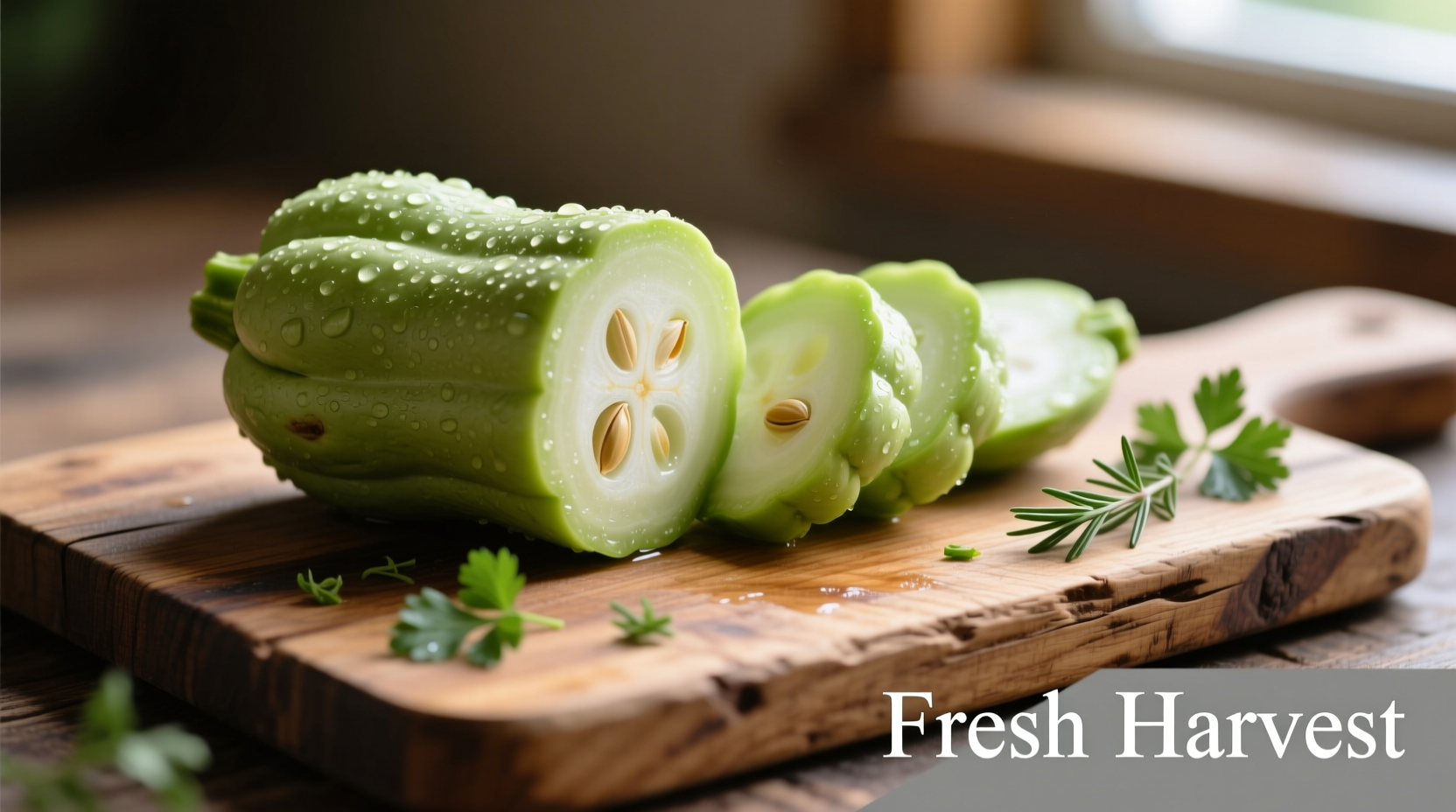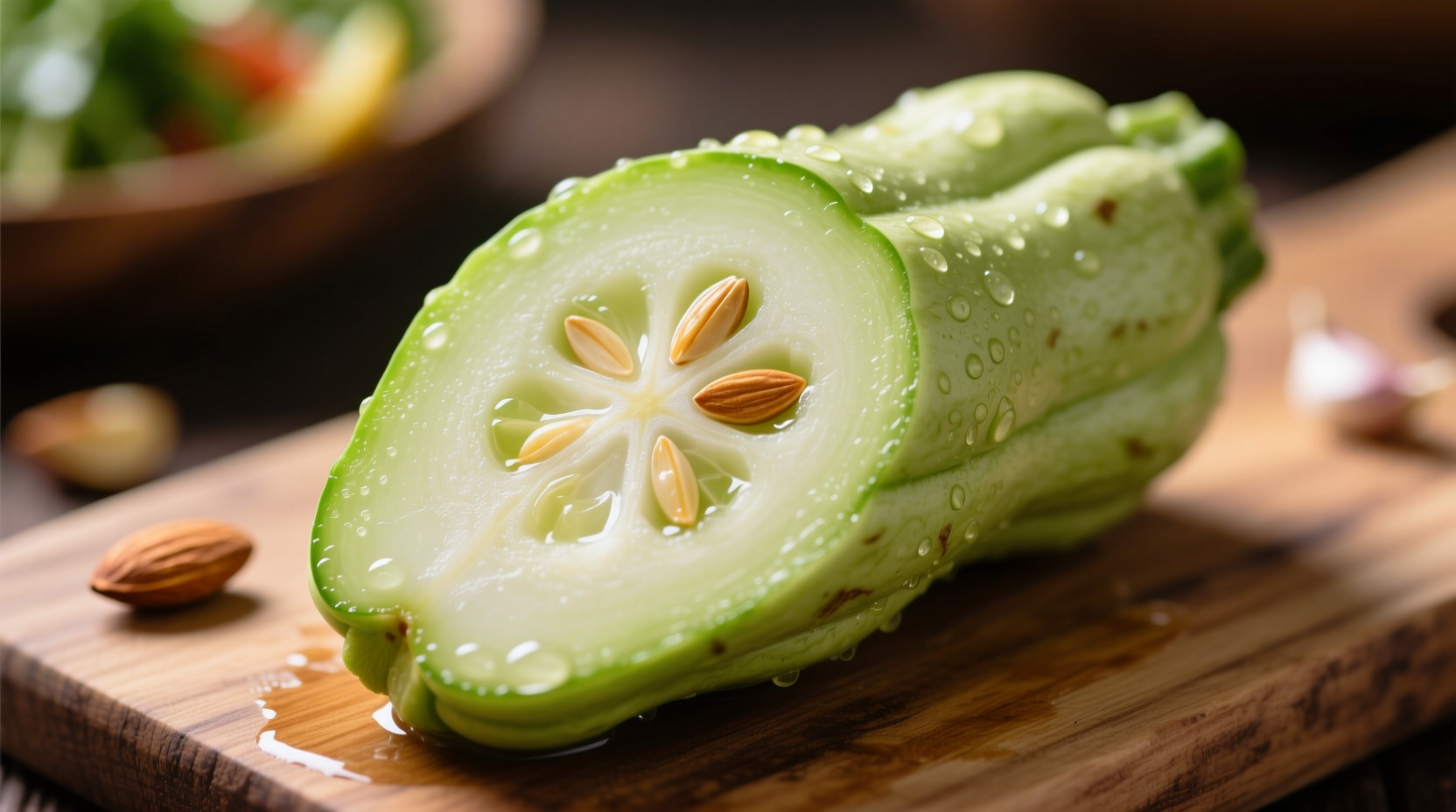Chayote squash has a mild, crisp flavor reminiscent of cucumber with subtle notes of zucchini and artichoke. When raw, it offers a refreshing crunch similar to jicama, while cooking brings out delicate sweetness without overpowering other ingredients in your dish.
Ever found yourself staring at that unusual pear-shaped vegetable in the produce section, wondering what does chayote squash taste like before adding it to your cart? You're not alone. This versatile member of the gourd family has been gaining popularity beyond its Latin American origins, yet many home cooks remain uncertain about its flavor profile and culinary potential.
Understanding Chayote's Flavor Profile
Chayote (Sechium edule) delivers a clean, refreshing taste that serves as the perfect culinary canvas. Its flavor characteristics change subtly based on preparation method:
| Preparation Method | Flavor Characteristics | Texture |
|---|---|---|
| Raw | Mild cucumber-like with subtle sweetness | Crisp, juicy crunch similar to jicama |
| Steamed | Delicate sweetness emerges | Firm-tender, slightly creamy |
| Sautéed | Nutty undertones develop | Firm exterior with tender interior |
| Roasted | Caramelized natural sugars | Rich, buttery texture |
This flavor versatility explains why chayote has been embraced across diverse culinary traditions. According to agricultural research from the USDA National Agricultural Library, chayote's neutral pH (5.8-6.5) makes it exceptionally receptive to absorbing surrounding flavors while maintaining its structural integrity during cooking.
How Chayote Compares to Familiar Vegetables
If you're wondering what does chayote squash taste like compared to vegetables you already know, consider these comparisons:
- Cucumber: Chayote shares cucumber's refreshing quality but with slightly more substance and less water content
- Zucchini: Similar mild flavor profile, but chayote maintains crispness better when cooked
- Jicama: Comparable crunch when raw, though jicama has sweeter notes
- Green Bell Pepper: Chayote lacks the distinct pepper flavor but shares structural properties

Maximizing Chayote's Flavor Potential
Understanding what does chayote squash taste like is just the beginning. To truly appreciate this vegetable, consider these preparation insights:
Raw Applications
When eaten raw, chayote delivers a refreshing crunch perfect for:
- Shaved into salads with citrus dressing
- Thinly sliced as crudité with hummus or guacamole
- Quick-pickled for tangy sandwich toppings
Food scientists at the University of California note that chayote contains natural enzymes that can cause slight tingling when eaten raw. Peeling thoroughly and soaking in cold water for 10 minutes minimizes this effect while preserving crispness.
Cooked Transformations
Cooking unlocks different dimensions of what does chayote squash taste like:
- Steaming (3-5 minutes): Preserves delicate flavor while softening texture
- Sautéing with garlic: Brings out subtle nuttiness without overpowering
- Roasting at 400°F: Develops caramelized edges and richer flavor
- Stewing in soups: Absorbs surrounding flavors while maintaining shape
Regional Flavor Pairings That Shine
Chef Maya Gonzalez, whose research on Latin American ingredients appears in the USDA Agricultural Research Service publications, explains: "Chayote's mild flavor makes it incredibly adaptable across culinary traditions. In Mexico, we enhance its natural sweetness with lime and chili, while in the Caribbean it's often paired with coconut milk for a tropical twist."
Consider these proven flavor combinations:
- Mexican Style: Lime juice, cilantro, jalapeño, and tomato
- Asian Fusion: Ginger, garlic, soy sauce, and sesame oil
- Mediterranean: Lemon, oregano, olive oil, and feta cheese
- Tropical: Coconut milk, curry spices, and fresh herbs
Common Flavor Misconceptions
Many home cooks wonder is chayote squash bitter or if it has an unpleasant aftertaste. When properly prepared, chayote should never be bitter. Bitterness typically indicates:
- Over-mature specimens (choose firm, unblemished squash)
- Inadequate preparation (peel thoroughly and remove seed membrane)
- Improper storage (keep in cool, dark place away from ethylene-producing fruits)
Nutrition research from Harvard T.H. Chan School of Public Health confirms that chayote's mild flavor profile makes it an excellent vehicle for nutrient absorption when paired with healthy fats like olive oil or avocado.
Practical Tips for First-Time Chayote Users
Ready to try chayote but unsure where to start? Follow these steps:
- Select: Choose firm, bright green squash without soft spots
- Prepare: Wear gloves if sensitive to natural compounds (peel thoroughly)
- Store: Keep whole in refrigerator for up to 2 weeks
- Start Simple: Try raw in salads before experimenting with cooked applications
- Season Well: Its mild flavor welcomes bold seasonings without overwhelming
Remember that what does chayote squash taste like ultimately depends on your preparation method and seasoning choices. This vegetable's culinary magic lies in its ability to transform while maintaining its essential character—making it equally at home in a simple salad or an elaborate casserole.











 浙公网安备
33010002000092号
浙公网安备
33010002000092号 浙B2-20120091-4
浙B2-20120091-4